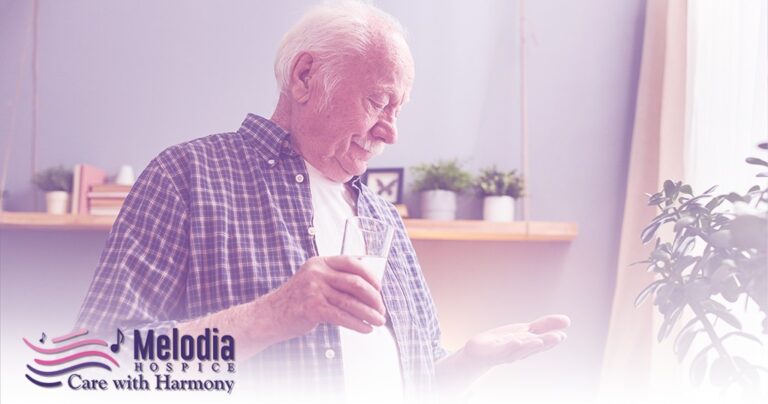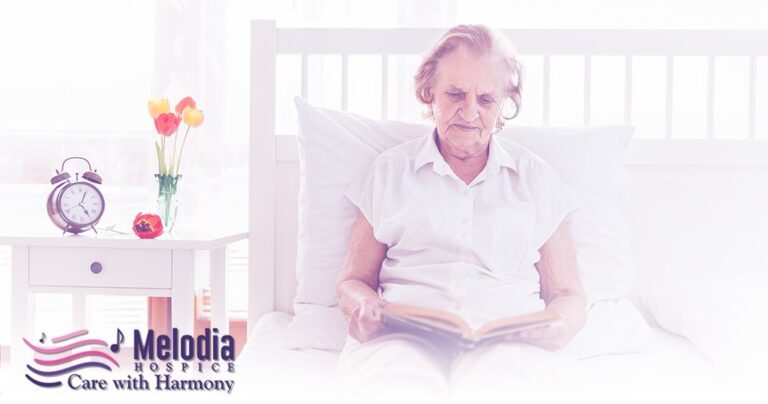End Of Life Care In San Jose City, California
“What would you like to see engraved on your tombstone?” asks the slogan of the Tombstone Pizza advertisements. A group of menacing men loom over the condemned, asking the question, and the one ready to face their end responds in a hilarious manner with “cheese and pepperoni!” Because of the unexpected response, it makes for a humorous commercial. But, let’s be honest, the phrase “cheese and pepperoni” isn’t exactly what the bulk of us would like to be written on the wall of our existence.
The majority of us wish to die with dignity, both for ourselves and for our loved ones. Ideally, we’d like to meet the end of our lives in a graceful and tranquil manner, so that it is similar to the beginning and middle of our lives: thoughtful, respectable, and meaningful. Death, unfortunately, does not come to everyone in the same manner. The end of life is frequently accompanied by the unpleasant details of physical decline, such as emotional grief at the prospect of having to say goodbye to loved ones, as well as physical discomfort and limits.
Why Managing Pain Is Important

Pain generates distress in and of itself, but it also has a significant impact on a variety of other factors that are critical to living well and dying well. Pain, for starters, makes it difficult to sleep. As patients near the end of their lives, their sleep becomes more frequent and of greater duration. An injured patient’s sleep patterns may be disrupted by the need to move constantly to avoid being in an uncomfortable posture. When patients are unable to get adequate sleep, the overall experience of pain worsens, creating a vicious cycle of cause and effect that eventually results in higher chronic pain levels in the patient. Furthermore, most of us would like to be able to meet the end of our loved ones’ lives or the end of our own lives with the opportunity to make final connections.
Time to say goodbye is essential to having a positive end-of-life experience, whether it’s sharing cherished memories or telling family stories. These possibilities are disrupted by pain, as it is difficult to think or recall well while the body is in a significant degree of misery. In turn, this results in a lack of desired relationships, which raises the likelihood of despair and anxiety in the months and years leading up to death. Effective pain treatment at the end of life is critical for the sake of both physical relief and the ability to maintain meaningful connections with others.
Considering Different Options

It should come as a relief to know that the physical pain and increasing limits that the body experiences as it nears the end of life can be controlled. As death approaches, there are care and treatment alternatives that can help people die with dignity and relative comfort. Hospice and palliative care teams, for example, will thoroughly assess the needs of your loved one when it comes to pain management in the elderly at the end of life. Questions such as “where does it hurt” and “how much does it ache” can be answered with a range of different instruments and techniques.
Pain can be measured on a scale from 1 to 10, with 1 representing “nothing hurts” and 10 representing “the worst pain I’ve ever encountered.” There are additional visual scales available for senior people who have difficulty communicating verbally, such as those with Alzheimer’s disease. Care workers who have a lot of experience are also better at spotting nonverbal indicators of distress. It is possible that a senior has a preference for leaning to one side in the bed, signaling those bedsores or other infections should be checked for. Food and liquid consumption can also act as a useful indicator when it comes to discomfort.
Creating A Plan Of Care

The most effective pain treatment in end-of-life care is pain management that has been well planned. Whenever feasible, members of the hospice and palliative care team, as well as family members and the elderly person himself or herself, should meet openly to discuss what is to come in the next weeks, months, or even years. Participants who are well informed are more likely to make responsible decisions. An effective care team will inquire about the patient’s end-of-life objectives, and will strike a balance between comfort care and desired functions. For example, a person may be willing to reduce the dose of pain-relieving medications in exchange for the opportunity to spend more time with his or her grandkids.
A recorded plan that outlines the patient’s goals, concerns, and planned activities will assist everyone on the care team in carrying out the patient’s and his or her family’s end-of-life desires in the most appropriate manner. According to the plan, the majority of hospice and palliative care providers are capable of providing drugs as well as a wide range of additional therapies for pain management in the aged population.
Compassionate End Of Life Care

While deciding what we want on our tombstones is not something many of us would like to think about for our loved ones or ourselves, the reality is that death will come to all of us someday. It is possible to have a dignified and graceful end of life experience, such that whatever is put on the tombstone reflects a life well lived – and one that came to a satisfactory conclusion.
Usually, by the third decade of life, when there has been more life lived than life still to come, we have come to terms with the fact that life is not without its share of suffering. A paper cut or a stubbed toe may prompt us to exclaim, “ouch!” but it will not cause us to run home and wail to our parents. In fact, our parents are frequently gone by the time our own death is on the horizon. By the time end-of-life discussions become crucial, the age-old concern of “will it hurt?” has returned, and we need to make mature preparations with our loved ones about how to deal with the circumstances. Band-Aids and ice cream will not alleviate the suffering that people experience at the end of their lives, but there are decent, compassionate solutions accessible.
A medical specialty known as Palliative Care is typically regarded as having responsibility for pain treatment. When it comes to palliative care, it originates from the Latin term for “cloaking,” which is another way of stating “care that conceals your suffering.” Palliative care, which is frequently administered in a hospice setting, could be viewed as a much larger Band-Aid for a lot more nuanced experience of pain than conventional pain management.
Assessing Your Pain

one of the pioneers of modern hospice and palliative care, describes the suffering connected with the dying process as “whole agony,” which comprises physical pain, emotional pain, interpersonal conflict, and disbelief that the end has arrived. Patients’ pain will be better managed by physicians, nurses, and other caregivers who will monitor their progress on a regular basis. To better understand your pain and establish the best course of therapy, your care team will regularly inquire, “Where does it hurt?” and “How much does it hurt?” as well as related queries. Your caregivers will attempt to diagnose and manage any pre-existing or new pain that arises, as well as any psychological distress that you may be experiencing.
Use Of Medicine

One of the most common concerns that patients and their families have as they are nearing the end of their lives is how to make judgments about prescription and nonprescription medications. Even though your care team may be able to supply Tylenol or other over-the-counter medications, it is more likely that they will prescribe far stronger medications to handle your much more complex pain problems. Opioids, such as morphine, which is widely given for pain management, are something you may hear about and receive. The care team will properly provide you with the appropriate dosage and will also change your dose as needed. They will also assist you in managing any side effects that you may have as a result of the medicine.
Alternative Options
At the end of life, a high-quality hospice and palliative care team or centre will most likely have non-pharmaceutical treatments accessible to assist you or your loved one in coping with the pain management problems. Art and music therapy, for example, are commonly used as treatment options. Scientific and alternative research have both proved that professional music therapists can assist divert and reduce the effects of pain, bringing amazing respite to individuals who are suffering as a result of their efforts.
Music is used to comfort patients by renowned thanatologist Therese Schroeder-Sheker (a person who studies death, dying, and associated practises). She employs both vocal and harp music to do so. When it comes to pain management for tumours or degenerative illnesses, Schroeder-Sheker notes, “[the patient] may have good pain medicines, but may be battling with emotional, mental, or spiritual anguish.” When she visits patients in their homes, she plays music that helps to slow down beating hearts and regulate breathing, allowing individuals who are suffering from end-of-life pain symptoms to enter a deep, restorative sleep.
Additionally, as an important aspect of end-of-life care, both religious leaders and members of your faith community are usually available to pay a visit. Prayer, meditation, hand-holding, chanting, and other faith-related rituals frequently attract persons nearing the end of their lives back into the familiar space of their communities and religious practices that have provided comfort throughout their lives up until the point of death. If you do not belong to a religious organization, ask your hospice and palliative care specialists for recommendations.
Life Goals The Ultimate Challenge

Your hospice and palliative care team, as well as your family and friends, view your pain management goals as a means of ensuring that you live your best, most vibrant life possible until the end. What your carers will confront the most difficult time with is assisting you in identifying the most essential aspects of your last months, weeks, or days, regardless of whether you are receiving medication or alternative therapies. Perhaps you are willing to tolerate some discomfort with lower-potency medication doses in order to be awake and attentive when your grandchildren come to visit. Some therapies may be required to assist you in getting adequate rest throughout the week leading up to a wedding that you are looking forward to attending; this is possible. You may require treatment to address your feelings of worry and depression that accompany the end of life.
Whatever your objectives are, explain them clearly or talk through your thoughts with your care team so that your pain can be handled in the most effective way possible to bring you and your loved one deep delight in all of your times of shared happiness.
Harbor Light Hospice can provide you with further information on pain management for the seniors in your life who are nearing the end of their lives. You can reach us at any time of day or night by contacting us through our 24/7 online customer support chat or by calling 1-888 635-6347 (MELODI-7).
